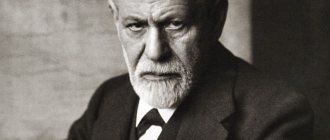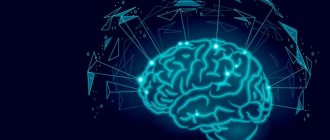Every person has vague or more or less clear memories of childhood, adolescence, and student years. Some of them are bright and conscious, others are vague and foggy. Some events are irretrievably forgotten, and even the stories of parents or friends are not able to bring them back from there. Human long-term memory (abbreviated as LTM) is responsible for all this.
Thanks to it, he can retain and reproduce various information, the statute of limitations of which is practically unlimited. Some people remember what happened to them starting from the age of 2, others only from the age of 6. And there are also such unique personalities (such as the American actress and presenter Marilu Henner) who can recreate pictures in detail, starting from their very birth.
What it is
Long-term memory is an object of study in neurophysiology and psychology.
In neurophysiology, it is studied as the ability of neurons to change the strength of synapses. The ability to learn and remember information is based on it. This mechanism is observed in all organisms with a central nervous system.
In psychology, this is the highest mental function that allows you to retain, preserve, accumulate and reproduce a large amount of knowledge and skills acquired over a long time.
In other words, long-term memory is a storehouse of information in brain structures, which is characterized by a large (according to many experts, unlimited) volume and a long shelf life. The accumulation and use of material located there becomes possible thanks to strong neural connections that do not disintegrate instantly (as in short-term memory), which are determined by complex biochemical processes in the body.
Single Data Rate SDRAM
At the moment, SDR SDRAM is clearly an obsolete technology. It was one of the first architectures to support synchronous access. Single Data Rate means that one word can be transmitted in one cycle (16 bits for x86 architecture). This type of memory was widely used in the 90s, until the release of the Intel Pentium III.
The most common standards were PC-100 and PC-133, which could operate at clock frequencies of 100 and 133 MHz, respectively.
Neurophysiology
In 2011, an important discovery was made at Duke University (a private research institution in the USA, North Carolina) at the medical center. Scientists have described in detail the neural circuit that is the basis of long-term memory. The signal lasts only 10 minutes, but strong connections are formed that do not disintegrate for a sufficiently long period and can persist throughout life.
Before this, neuroscientists could not figure out how such strong and long-lasting contact was established between the links of this chain. It turned out that long-term memory is based on pure biochemistry: the connection between them is determined by signaling proteins, which, in turn, provide a stable neuronal cellular framework of actin. This is a globular protein, thanks to which the links do not sag or break.
This phenomenon was called long-term potentiation. Its approximate scheme includes two stages.
Stage 1. Primary
A short nerve electrical impulse (new, previously unknown to the central nervous system) → Establishment of contacts between neurons → Formation of a strong actin cytoskeleton (electrical column along which the impulse travels) → Response (saving the necessary information).
From a biochemical point of view, the launch of a signal and the establishment of contacts between neurons looks like this:
A powerful flow of calcium ions into the synapse → Launch of a kinase called CaMKII (an enzyme that controls the activity of signaling proteins using phosphates) → Activation of two proteins, Rho and Cdc42 → Formation of the actin cytoskeleton.
Stage 2. Secondary
The same short nerve electrical impulse (already known to the central nervous system) → Its conduction along the same actin cytoskeleton along which it has already passed → Response (reproduction of the necessary information).
The second chain is much faster in speed than the first, because contacts between neurons have already been established earlier, just as the actin cytoskeleton is also formed. The more often a person remembers some event from the past (triggers that same impulse), the faster he reproduces it, no matter how long ago it happened, because the central nervous system already knows the path along which this signal is sent.
The biochemical basis of long-term memory has become available to Duke University scientists thanks to a special laboratory microscopy method. It allows you to see molecular transformations in the synapse during the formation of a strong neuronal cytoskeleton.
The discovery of American scientists led to the conclusion that long-term memory is based on complex biochemical processes. In addition, it was revealed that Alzheimer's disease, dementia, and many neurological pathologies associated with the inability to restore memories from the past are accompanied by damage to two proteins Rho and Cdc42, which are responsible for the formation of the actin cytoskeleton.
Before this discovery, there were two completely different theories of LTP: glial (the activity of neuroglia) and the immunochemical mechanism (synthesis of antigens on synaptic membranes and antibodies to them in glial cells).
Star Trek to the Future
| The strange texture in the photo is memory based on magnetic cores. Here is a visual structure of one of the arrays with wires and ferrite rings. Can you imagine how much time it took to find a non-working module among them? |
The main disadvantage of memory, and indeed of all other components based on vacuum tubes, was heat generation. The tubes had to be cooled using radiators, air and even water. In addition, constant heating significantly reduced the operating time - the tubes naturally degraded. At the end of their life, they had to be constantly adjusted and eventually replaced. Can you imagine how much effort and money it took to service computer systems?!
Then came the time of arrays with closely spaced ferrite rings - an invention by American physicists En Wang and Wei-Dong Wu, modified by students led by Jay Forrester from the Massachusetts Institute of Technology (MIT). Connecting wires ran through the centers of the rings at an angle of 45 degrees (four per ring in early systems, two in more advanced ones). Under voltage, the wires magnetized ferrite rings, each of which could store one bit of data (magnetized - 1, demagnetized - 0).
Jay Forrester developed a system in which the control signals for numerous cores were carried over just a few wires. In 1951, memory based on magnetic cores (a direct analogue of modern RAM) was released. Subsequently, it took its rightful place in many computers, including the first generations of DEC
and
IBM
. Compared to its predecessors, the new type of memory had virtually no disadvantages. Its reliability was sufficient for operation in military and even spacecraft. After the crash of the space shuttle Challenger, which led to the death of seven members of its crew, the data on the on-board computer, recorded in memory with magnetic cores, remained completely intact and intact.
The technology was gradually improved. Ferrite rings decreased in size and the speed of operation increased. The first samples operated at a frequency of about 1 MHz, the access time was 60,000 ns - by the mid-70s it was reduced to 600 ns.
Stages
Coding
Unlike short-term, human long-term memory does not imply any specific type of representation of verbal material. This means that coding here is neither visual nor auditory. It is based on elements, the main one being meaning. Because of this, information retained and later reproduced is rarely 100% accurate.
Example. To remember a phone number, you repeat it several times. Auditory encoding within short-term memory is triggered. When a teacher gives a definition of a complex scientific term in a lecture, it is unlikely that any of the students will be able to repeat it exactly after an hour and a half of classes, although they will convey the essence in their own words. This is a semantic encoding that works on the DVP: the main thing is to grasp the main content, and not remember the details.
Playback
A person cannot reproduce information from the KVP because it fades away or is replaced by new images. In long-term memory this is excluded. Everything that a person consciously remembers remains in storage for life. The question here is quite logical: why then can’t we remember some events from the past? And what about those who experience failures?
Here it is appropriate to compare a warehouse of information with a huge library of a million books. Those shelves that we often access are always at hand, so the material from them can be easily and quickly reproduced. But if you ask an older person whose field of activity does not intersect with mathematics what Newton’s binomial formula looks like, which he studied in the 10th grade algebra course, he is unlikely to remember, although he memorized it during his school years. It is in the storage of his memory, but it is too far away, and he is unlikely to find it without repeating it.
In psychology, the reproduction of information in long-term memory can go in two ways - through its search and activation.
Storage
This stage is mostly associated with neurophysiology, since the hippocampus, a section of the limbic system of the brain, comes to the fore here. Its task is to consolidate memory (transition from short-term to long-term), storing information in the same storage.
To date, its functions continue to be actively studied.
Types of long-term memory
Long-term memory is divided into several clusters:
- autobiographical - responsible for retaining events from one’s own life for a long time;
- reproductive - allows you to remember previously stored information;
- associative - uses functional connections between objects that need to be remembered to encode information.
Based on accessibility, there are 2 main types of memory - implicit and explicit. Their peculiarity is that the simultaneous operation of these types of memory is impossible.
Implicit
This type of long-term memory is aimed at unconsciously storing information without verbal display. Implicit memory is involved when you need to make a decision or act automatically using well-practiced skills. Implicit memory is considered the basis on which intuition is formed. If a person unconsciously remembers any information, it is updated and becomes a “hint” at the right moment.
Explicit
This type of DVP is formed through conscious, purposeful repetition of material.
Kinds
Implicit
Unconscious, hidden, unconscious long-term memory that allows the use of information obtained from past experiences that may have already been forgotten by the person. Scientists have proven its right to exist using the example of people with amnesia resulting from traumatic brain injury, emotional shock or concussion. They forget their entire past life, starting with their name and ending with their family and friends. However, they retain their professional and motor skills: accountants can still prepare a tax report, those with a driver’s license drive a car, they do not need to be re-taught to hold a spoon, brush their teeth and perform other routine daily tasks. This is because this information was stored in the implicit part of their memory archive.
Explicit
Conscious, voluntary, declarative long-term memory, which is used to purposefully retain and retain existing experience. If necessary, a person extracts it from time to time and voices it. It is thanks to her that people learn foreign languages, remember formulas, dates, rules, instructions, pass exams, etc.
Both types of memory can come into conflict with each other in different situations. When a person does something using the implicit one, it is undesirable to simultaneously turn to the explicit one. A striking example: pouring tea or coffee into a cup (an unconscious skill) and simultaneously thinking about something (addressing the conscious one), you can pour boiling water and get burned. The same thing happens when driving a car: if you are mentally distracted, you violate the traffic rules.
Explicit long-term memory comes in two other types.
- Episodic
These are the memories of a specific person from his personal experience about the events of his own life that happened to him personally in the distant or not so distant past.
- Semantic/historical
Memories that preserve the experience of humanity. These usually include everything that has to be memorized during school and college years. Mathematical formulas, historical dates and events, rules of the Russian language and other theoretical knowledge.
History in brief
The first computers had a significantly different architecture from today's and, accordingly, worked differently with RAM. Most people with an understanding of the history of information technology probably know that these types of storage devices originally used vacuum tubes—similar to those used in old CRT televisions and monitors. However, then came the era of transistors developed by Bell Labs.
Transistors have become the main component of all modern types of memory, which began with the simplest transistor switches - electrical circuits that allow storing 1 bit of information. The keys further developed into elements called flip-flops, which could be combined into registers; they are the ones most often used today as read-only memory cells. The next improvement was the combination of a transistor and a capacitor, which made it possible to develop a more compact dynamic memory.
Characteristics
The main characteristics of long-term memory are best considered against the background of its comparison with short-term memory.
Separately, it is worth paying attention to the fact that the volume of human long-term memory is supposedly 1 million GB of information. Until recently, scientists could not give an exact figure and hypothesized that it was impossible to determine the limit of this characteristic. However, in the age of computerization, the brain is often compared to processors. Research in this area has suggested that fiberboard storage is similar to a hard drive, which can hold that same 1 million GB. The figure is approximate and still requires scientific justification.
Where does memory live? Where are memories stored?
Although memories are not stored in a specific place, but are distributed in a system of neural connections, different parts of the brain play a predominant role in one type of memory or another.
- The dorsolateral parts of the prefrontal cortex are primarily responsible for working memory;
- Episodic memory is associated with the function of the hippocampus (translated from Greek as “seahorse”), the medial nuclei of the thalamus, and the mediobasal frontal regions;
- Semantic memory is associated with the function of the posterior inferior temporal and temporo-occipital regions of the brain;
- Procedural is associated with the function of the premotor cortex of the frontal lobe, subcortical gray ganglia and cerebellum;
- A special area on the fusiform gyrus involved in face recognition;
- Amygdala (memory of emotional events)
Violations
Disorders include underdevelopment of long-term memory, when a person simply does not know how to correctly encode and reproduce information, and complete amnesia, which is characterized primarily by damage to the hippocampus. If in the first situation everything can be corrected through constant training, then in the second the forecasts most often remain unpredictable.
Causes
Physiological:
- asthenia;
- liver intoxication;
- damage to the central nervous system and brain: head injury, post-stroke condition;
- intellectual disorder, schizophrenia;
- chronic alcohol or drug intoxication.
Mental:
- overwork;
- neuroses;
- constant stress;
- excessive emotional and mental stress;
- depression;
- psychotrauma;
- dysthymia: constant bad mood.
Household:
- poor nutrition;
- lack of sleep;
- excessive physical and intellectual stress;
- improper planning of the day, lack of routine.
Symptoms
- Difficulties with conscious memorization: poems, dates, exam material learned by heart are poorly retained in memory and are reproduced with errors;
- inability to remember events from the distant or near past, memory lapses;
- confusion, violation of cause-and-effect relationships;
- forgetfulness in basic everyday situations: didn’t make a report, didn’t come to a meeting, didn’t buy bread for home;
- social maladjustment;
- decreased mental capacity and performance;
- inattention, inability to focus and concentrate;
- confusion.
If violations of short-term memory lead primarily to everyday problems (when you don’t remember what you did 5 minutes ago), then the consequences of damage to long-term memory affect almost all areas of life. At work, this leads to poor performance of one’s duties, and in the family – to the breakdown of personal relationships. The person turns out to be socially maladapted. Even if his DVP is simply poorly developed, he will not be successful compared to other students (students, employees), not to mention various forms of amnesia.
For more information about what causes memory impairments, how they manifest themselves and how to get rid of them, read our separate article.
Comparison with short-term memory
All memory components function in harmony. Knowledge for long-term storage comes from information capacity retained by short-term memory (STM). Two-stage memorization has a certain biological meaning. Random and unnecessary information is filtered out and is not transferred to storage in the hardboard.
Unimportant information does not overload the brain. The perceived material is emotionally experienced, reconstructed and placed in the storage of brain structures for a long time.
When comparing the two types of memory, differences are observed in the duration of storage of the material, the strength of its retention and information capacity. Information is stored in the hard drive for 20-30 seconds, after which some part of the material is lost forever, and the other part of the successfully encoded information ends up in the hard drive archive, where it is stored from several minutes to many years. KVP encodes information visually or acoustically, while DVP encodes information at the semantic level.
The mechanism for storing information in CVP is attention, in DVP it is pronunciation. The structure of the CVP is characterized by the absence of associations, while the DVP is characterized by associativity. Errors in reproducing information in the first type of memory arise due to its repression and rapid attenuation. Causes of erroneous recall in long-term memory may include organic disorders, inadequate instructions, and interference.
Diagnostics
To find out how well a person's long-term memory is developed, various test methods are used.
Method No. 1. Memorizing words that are logically unrelated to each other
The bottom line. The subjects are given 2 lists of words (for children 6-12 years old one will be enough), which are logically unrelated to each other. Each of them is numbered.
Recommended Material:
Task options:
- Lists can be read aloud (without allowing subjects to write them down). If the words are read out, this must be done 2-3 times for adults and 4-5 times for children 6-12 years old.
- They can be written on the board.
- They can be distributed on separate pieces of paper to each subject.
Exercise:
- Listen/read the lists of words carefully and try to remember them.
- After listening/reading multiple times, try to reproduce it on paper. Preferably in the same order.
- Next, you need to be distracted by some other activity.
- After half an hour, the lists are read/listened to one more time and played again.
- The same thing is done twice more - the next day and a week later. The words are read/listened to again, but only once.
The results of all 4 tests are calculated using the following formula:
C (DVP coefficient) = B (number of correctly reproduced words): A (total number of words) x 100.
Next, the arithmetic mean of all 4 tests is found and based on the resulting result, conclusions are drawn:
Method No. 2. Memorizing text with semantic connections
The essence of the technique is almost the same. Only the text is not read aloud, but is distributed to each subject. At the same time, attention is drawn to the fact that the main thoughts are highlighted in bold, which must then be reproduced. That is, it is not necessary to memorize the sentences themselves and the entire text.
This technique is used to diagnose DVP in adolescents (13-17 years old) and adults.
Card with text:
You need to reproduce the main ideas of the text immediately after reading, then after half an hour, the next day and a week later. The results of all 4 tests are calculated using the formula:
C (DVP coefficient) = B (number of correctly reproduced thoughts): A (total number of highlights in the text) x 100.
Next, the arithmetic mean of all 4 tests is found and, based on the resulting result, conclusions are drawn according to the table above.
In case of serious impairments of long-term memory, laboratory diagnostic methods (EEG, CT, MRI, ultrasound) are performed.
How to develop
Long-term memory is a cognitive ability and can therefore always be improved. If you train it throughout your life, in old age you can avoid failures and diseases such as Alzheimer's, Pick's, and Parkinson's. There are many techniques for this:
- training attention and thinking using special exercises;
- mnemonics: alphanumeric code, hanger methods, phonetic associations, O'Brien, Shed system;
- various memory games: Top Secret, N-back, Memory Matrix;
- learning poems, songs, texts by heart;
- Cicero's method (laying out information in storage on shelves);
- Aivazovsky's method (detailing each image).
We must also not forget that the development of long-term memory largely depends on the lifestyle that a person leads. If you want to improve it, follow these recommendations:
- breathe more fresh air;
- lead a healthy, active lifestyle;
- play sports;
- do not allow worries and excessive stress;
- communicate;
- organize proper sleep;
- eat right;
- develop your intellect: read, solve puzzles and crosswords, play chess, go through quests;
- follow the daily routine.
Long-term memory determines the quality of life and a person’s success in many areas. That is why it is so necessary to maintain it at a high level and constantly improve it.
Development of long-term memory
Memory is very plastic. Even in the presence of organic brain damage, it is possible to improve the ability to remember and retain information.
Regular training makes it possible to avoid memory loss, which occurs mainly in old age. Working on memory development also helps reduce the intensity of symptoms of Alzheimer's disease, Parkinson's disease and other pathologies.
Exercises to improve memory
The most accessible way for everyone to improve memory is to memorize texts and poems. Learning foreign languages develops long-term memory well - it is especially effective for people of middle age and older.
To maintain long-term memory, you need to regularly perform simple exercises:
- mentally detail remembered images;
- systematize information into groups and, in your imagination, select a separate “shelf” in the storage for each group, while trying to remember its location;
- solve puzzles, use logic games, solve Sudoku and crossword puzzles.
To develop and maintain memory in good condition, it is important to lead a healthy lifestyle - walk a lot in the fresh air, get enough sleep at night, eat well, and avoid stressful situations.
Irina Sherbul











